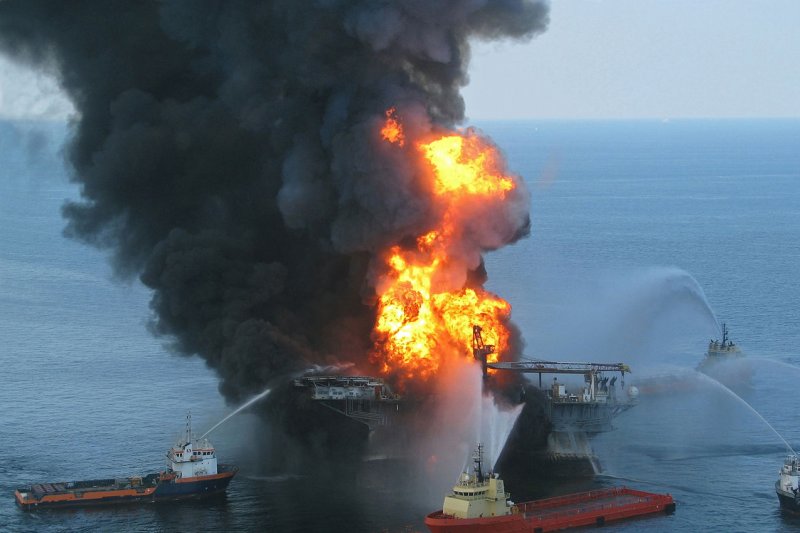Platform supply vessels battle the blazing remnants of the off shore oil rig Deepwater Horizon. Photo courtesy of U.S. Coast Guard
Nov. 1 (UPI) -- The chemical dispersants used to clean up oil after the Deepwater Horizon spill in the Gulf of Mexico in 2010 were ineffective and unneeded, a new study says.
Researchers report in a study published this week that dispersants used in the largest oil spill in U.S. history -- 210 million gallons of oil poured into the Gulf over 87 days after a BP oil rig exploded -- played no role in its clean up.
BP injected 3,000 tons of a subsea dispersant called Corexit to push back the spread of oil and dissolve its particles. Instead, the researchers report, the dispersant was rendered ineffective due to the depth of the oil.
And according to the study, the Corexit may have suppressed the growth of oil degrading sea bacteria, in addition to making the oil itself more toxic.
"The results of this study are critically important," Samantha Joye, a University of Georgia researcher and the study's co-author, said in a press release.
"This work shows clearly that the eruptive nature of the Macondo discharge was more than sufficient to generate the deepwater oil plume. Further, application of dispersant did not increase the amount of oil in the aqueous phase or change the distribution of oil over depth. These findings should change the way we think about spill response and calls for a reconsideration and reprioritization of response measures."
The researchers think the "capping stack" method that BP used to ultimately stop the wellhead outflow during the 2010 spill could be an effective first response plan.
The researchers also suggest that ditching the Corexit chemical for less toxic bio-surfactant agents that encourage biodegeneration, may offer a practical option for oil spills in shallow waters.
Joye's research team used BP Gulf Science Data water chemistry data compiled in the Gulf of Mexico Research Initiative, as part of a massive data collection effort for the study.
"Our earlier work using computer modeling and high-pressure experimental approaches suggested that pumping chemical dispersants at the spewing wellhead may have had little effect on the amount of oil that ultimately surfaced," said Claire Paris, a professor of ocean sciences at the University of Miami.
"But empirical evidence was lacking until the release of the BP Gulf Science Data. When completely different approaches converge to the same conclusion, it is time to listen. There is no real trade-off because there is no upside in using ineffective measures that can worsen environmental disasters," Paris said.















